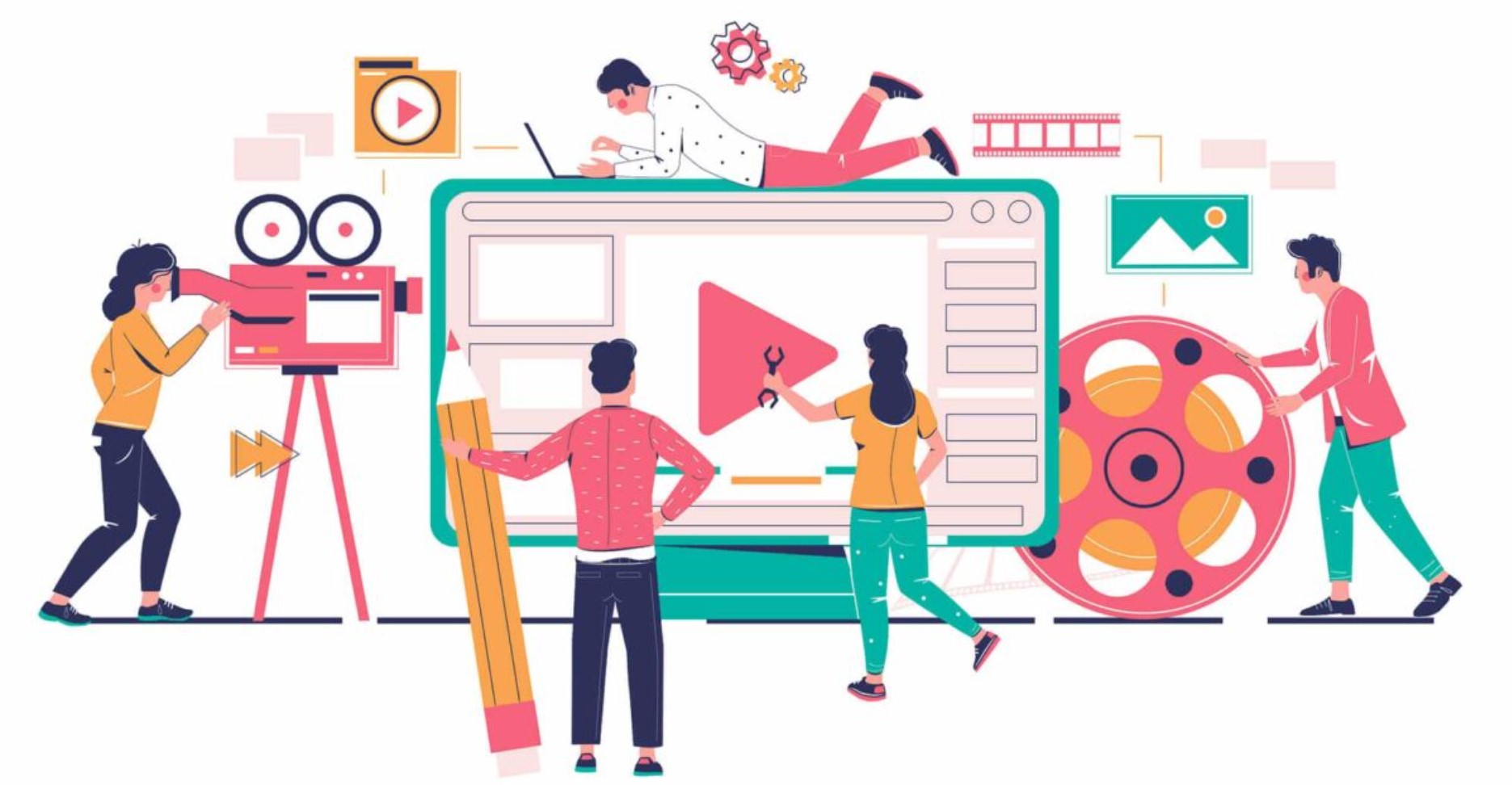Applying Animations and Transitions to Enhance User Experience of the Background Design
The visual appeal of a website or application is crucial in making a lasting impression on users. Animations and transitions are powerful tools that add life and dynamism to the background design. They can transform a static backdrop into a captivating visual experience, drawing users’ attention and increasing engagement. By carefully incorporating animations and transitions, designers can create an immersive environment that enhances the overall user experience.
Enhancing User Engagement with Dynamic Backgrounds
1. Establishing Visual Hierarchy
- One of the key benefits of using animations and transitions in background design is the ability to establish a visual hierarchy. By assigning different levels of motion and interactivity to various elements, designers can guide users’ attention and convey the importance of specific content. For example, a subtle parallax effect can be applied to the background, creating a sense of depth and drawing focus to the foreground elements.
2. Creating a Seamless Transition
- Smooth transitions between different sections of a website or application are essential for providing a seamless browsing experience. Animations can be employed to transition between pages, sections, or content elements, allowing users to navigate through the interface effortlessly. By incorporating well-designed transitions, designers can eliminate abrupt changes and create a cohesive flow throughout the user journey.
3. Conveying Information through Motion
- Animations and transitions can also serve as a means of conveying information. By animating specific elements in the background, designers can communicate changes, actions, or feedback to users. For instance, a loading animation can indicate that a process is in progress, providing visual feedback and reducing user frustration. By leveraging motion, designers can enhance the usability and clarity of the interface.
Types of Background Animations and Transitions
Parallax Scrolling
Parallax scrolling is a popular technique that involves the background moving at a different speed than the foreground elements. This creates an illusion of depth and adds a sense of interactivity to the design. By applying parallax scrolling to the background, designers can create a visually captivating experience that captivates users.
Particle Effects
Particle effects are small, animated particles that move across the background. These dynamic elements can add a touch of magic and whimsy to the design. By simulating natural phenomena like falling snow, floating bubbles, or twinkling stars, particle effects can create an enchanting atmosphere and enhance the overall user experience.
Video Backgrounds
Using video as a background can bring life and motion to the design. Whether it’s a looping video or a fullscreen background video, incorporating moving visuals can instantly grab users’ attention and immerse them in the content. Video backgrounds are particularly effective for showcasing products, telling a story, or creating a specific mood.
Animated Illustrations
Animated illustrations add personality and charm to the background design. By bringing illustrations to life with subtle animations, designers can create a more engaging and memorable experience. Animated characters, objects, or scenes can inject a sense of playfulness and make the design feel alive.
Gradient Transitions
Gradient transitions involve smooth color shifts that create a sense of movement. By applying gradients to the background and animating the transition between colors, designers can add a dynamic and visually pleasing element to the design. Gradient transitions can evoke emotions, create visual interest, and make the design more visually appealing.
Best Practices for Implementing Background Animations and Transitions
▪ Optimize Performance
- While animations and transitions can enhance the user experience, it’s essential to consider performance optimization. Large file sizes and excessive animations can slow down the loading time of a website or application. Therefore, it’s crucial to optimize graphics, compress videos, and use efficient animation techniques to ensure smooth performance across devices.
▪ Maintain Consistency
- Consistency is key when applying animations and transitions to the background design. Maintain a consistent visual style throughout the website or application to provide a cohesive experience. Ensure that the animations and transitions align with the overall brand identity and complement the content rather than distract from it.
▪ Ensure Responsiveness
- In today’s mobile-centric world, it’s vital to ensure that background animations and transitions are responsive and work seamlessly across different devices and screen sizes. Test the design on various devices and use responsive design principles to adapt the animations and transitions accordingly.
▪ Complement Content
- Background animations and transitions should enhance the content rather than overpower it. Ensure that the animations and transitions don’t overshadow the main message or distract users from the core purpose of the website or application. The background design should work harmoniously with the foreground elements and guide users’ attention effectively.
▪ Test and Iterate
- Testing is a crucial step in implementing background animations and transitions. Collect feedback from users, conduct A/B testing, and analyze user interactions to identify areas for improvement. Iterate on the design based on user feedback to create a seamless and engaging user experience.
Case Studies: Successful Examples of Background Animations
Website A: Engaging Users with Subtle Motion
Website A implemented a parallax scrolling effect in its background design. As users scroll down the page, the background elements move at a slower pace than the foreground, creating a sense of depth. This subtle motion adds visual interest without overwhelming the content, resulting in an engaging and immersive browsing experience.
Application B: Creating an Immersive Experience
Application B utilized video backgrounds to enhance the user experience.As users navigate through different sections of the application, video backgrounds change to match the content and create an immersive atmosphere. For example, a travel app showcases stunning destination videos as the background, allowing users to visualize themselves in different locations and igniting their wanderlust.
Future Trends in Background Design
3D Animations and VR
As technology continues to advance, the integration of 3D animations and virtual reality (VR) into background design holds great potential. 3D animations can add depth, realism, and interactivity to the background, creating a more immersive experience. VR backgrounds can transport users to virtual worlds and provide an unprecedented level of engagement.
Interactive Backgrounds
Interactive backgrounds allow users to actively engage with the design. This can include elements that respond to user interactions, such as hover effects or interactive particles. Interactive backgrounds empower users to interact with the design and create a personalized browsing experience.
Customization Options
In the future, background design may offer customization options to cater to individual preferences. Users might be able to choose from a variety of animation styles, transitions, or even upload their own background elements. Customizable backgrounds provide a sense of personalization and empower users to tailor their browsing experience.
Applying animations and transitions to the background design can significantly enhance the user experience of websites and applications. These dynamic elements captivate users, establish visual hierarchy, convey information through motion, and create a seamless and engaging browsing experience. By implementing best practices, such as optimizing performance, maintaining consistency, ensuring responsiveness, complementing content, and iterating based on user feedback, designers can create visually appealing and immersive backgrounds that leave a lasting impression on users.
FAQs
FAQ 1: Do background animations and transitions impact website performance?
Background animations and transitions can impact website performance if not optimized properly. It’s important to optimize file sizes, compress videos, and use efficient animation techniques to ensure smooth performance across devices.
FAQ 2: Can background animations and transitions be applied to mobile devices?
Yes, background animations and transitions can be applied to mobile devices. It’s crucial to ensure that the design is responsive and works seamlessly across different screen sizes.
FAQ 3: How can I choose the right type of background animation or transition for my project?
Choosing the right type of background animation or transition depends on various factors such as the nature of your content, target audience, and desired user experience. Consider the purpose of the design and how different animations or transitions align with your overall goals.
FAQ 4: What are some tools or software to create background animations and transitions?
There are several tools and software available to create background animations and transitions, such as Adobe After Effects, CSS animations, and JavaScript libraries like GSAP (GreenSock Animation Platform).
FAQ 5: Are background animations and transitions suitable for all types of websites and applications?
Background animations and transitions can enhance the user experience of various websites and applications. However, it’s essential to consider the context and purpose of your project. Ensure that the animations and transitions align with your brand identity and complement the content rather than distract from it.

